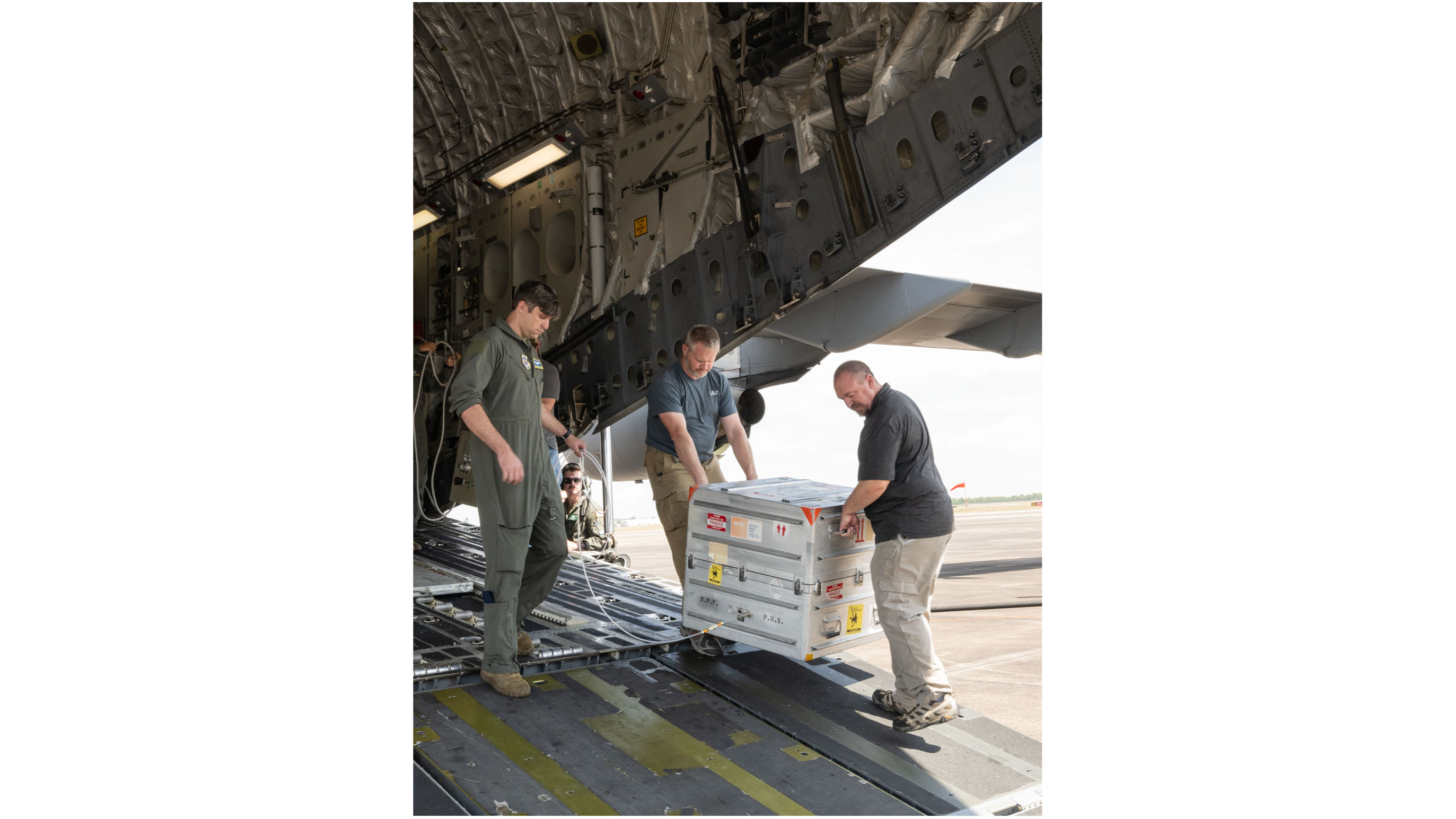OSIRIS-REx's asteroid sample lands in Houston (photos)

The asteroid sample collected by NASA's OSIRIS-REx spacecraft just experienced its second touchdown in only two days.
The sample — a stash of dirt and gravel that the probe snagged from the asteroid Bennu in October 2020 — touched down in the Utah desert on Sunday (Sept. 24), thrilling mission team members and scientists around the world.
But the asteroid sample stayed in the Beehive State for just a day before boarding a plane to its final destination, which it reached today (Sept. 25).
"Welcome to Houston, OSIRIS-REx! The asteroid sample arrived today in Texas where it will be curated and preserved by our team here at Johnson. The information collected could help scientists around the world investigate planetary formation, the origins of life and how asteroids might impact Earth," NASA's Johnson Space Center (JSC), which is based in Houston, said today in a post on X (formerly Twitter).
Related: NASA's OSIRIS-REx lands samples of asteroid Bennu to Earth after historic 4-billion-mile journey
OSIRIS-REx launched in September 2016 and arrived at Bennu, a 1,650-foot-wide (500 meters) near-Earth asteroid, in December 2018. The probe studied Bennu up close for 22 months, then swooped in to grab a sample — marking the very first time a NASA probe had managed to collect pieces of an asteroid in space.
That dive revealed Bennu's surface to be surprisingly spongy; OSIRIS-REx sank far into the asteroid before backing away to safety.
Breaking space news, the latest updates on rocket launches, skywatching events and more!
OSIRIS-REx left Bennu in May 2021, beginning a long journey back to Earth. At 6:42 a.m. EDT (1042 GMT) on Sunday, the probe released its sample capsule, which came down to Earth on the U.S. Department of Defense's Utah Test and Training Range about four hours later — just as planned.
The Bennu sample will now make its way to a newly built curation facility at JSC managed by the agency's Astromaterials Research and Exploration Science division.
The OSIRIS-REx science team — which includes more than 200 people based at 35 institutions around the world — will then study the sample for about two years in an effort to meet the mission's main science goals. As the above JSC post noted, those goals include better understanding how the solar system formed and evolved and the role carbon-rich asteroids like Bennu may have played in delivering life's building blocks to Earth.
The science team will have access to about 25% of the Bennu material, which is thought to weigh about 8.8 ounces (250 grams). Four percent of the sample will go to the Canadian Space Agency, which provided OSIRIS-REx's laser altimeter instrument.
The Japan Aerospace Exploration Agency (JAXA) will get 0.5% of the material, as part of a deal with NASA that includes collaboration between OSIRIS-REx and JAXA's Hayabusa2 mission, which returned a small sample of the asteroid Ryugu to Earth in December 2020.
The remaining 70% of the Bennu sample will remain at JSC "for study by scientists not yet born, using technologies not yet invented, to answer fundamental questions about the solar system," according to NASA's OSIRIS-REx sample-return press kit.

Michael Wall is a Senior Space Writer with Space.com and joined the team in 2010. He primarily covers exoplanets, spaceflight and military space, but has been known to dabble in the space art beat. His book about the search for alien life, "Out There," was published on Nov. 13, 2018. Before becoming a science writer, Michael worked as a herpetologist and wildlife biologist. He has a Ph.D. in evolutionary biology from the University of Sydney, Australia, a bachelor's degree from the University of Arizona, and a graduate certificate in science writing from the University of California, Santa Cruz. To find out what his latest project is, you can follow Michael on Twitter.

